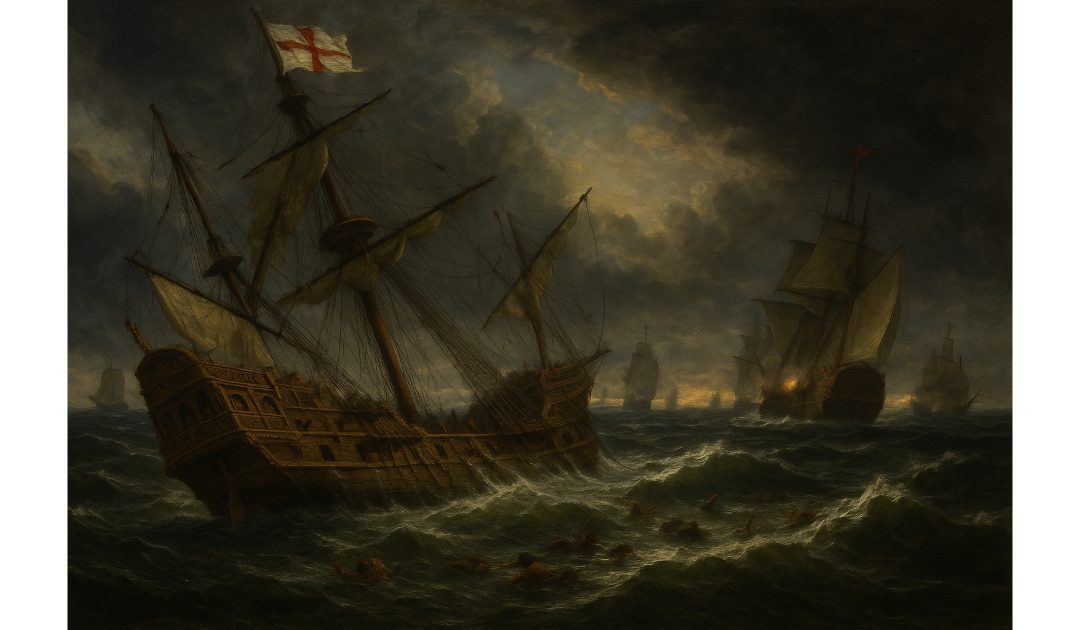The Mary Rose was a formidable Tudor warship, emblematic of England’s maritime ambitions during the reign of King Henry VIII. Constructed between 1509 and 1511 in Portsmouth, she was named possibly after Henry VIII’s sister, Mary, and the Tudor emblem, the rose. As a carrack-type vessel, she represented the cutting-edge naval architecture of her time, designed to serve both as a warship and a symbol of England’s growing naval prowess.
Measuring approximately 32 metres in length with a beam of 12 metres, the Mary Rose displaced around 500 tons when first built, later increasing after modifications. She carried a mixed armament of long-range bronze and iron guns, alongside smaller anti-personnel weapons, which reflected a transitional period in naval warfare—from medieval-style boarding actions to the use of heavy artillery in ship-to-ship combat.
Serving for 34 years, the Mary Rose was actively engaged in several conflicts, notably against the French during the Italian Wars. She underwent significant refitting in the 1530s to improve her firepower, increasing the number of gunports and reinforcing her hull. This transformation turned her into a fearsome galleon with a broadside capability, a design that influenced future naval tactics.
The ship’s most fateful day came on 19th of July, 1545, during the Battle of the Solent, as the English fleet faced an invasion force from France. In a tragic turn, the Mary Rose sank within sight of King Henry VIII, who watched from Southsea Castle. Eyewitness accounts suggest she heeled over while turning under full sail, with open gunports below the waterline hastening her demise. Historians debate the precise cause, considering factors such as overloading, poor stability from modifications, or human error in manoeuvring.
The wreck remained submerged for over 400 years before its rediscovery in 1971. A massive archaeological effort culminated in 1982 with the dramatic raising of the ship, an event watched by millions worldwide. The operation showcased pioneering techniques in underwater archaeology and conservation.
Today, the Mary Rose is preserved in the Mary Rose Museum in Portsmouth Historic Dockyard. The ship’s remains, along with over 19,000 artefacts recovered from the seabed, offer an unparalleled glimpse into Tudor naval life. Items such as personal belongings, weaponry, navigational tools, and even the remains of crew members provide insight into the daily experiences of those aboard.
The Mary Rose’s story transcends her role as a military vessel; she embodies the aspirations, technological innovations, and human stories of Tudor England. Her preservation and display continue to educate and inspire, connecting contemporary audiences with a pivotal era in maritime history.

